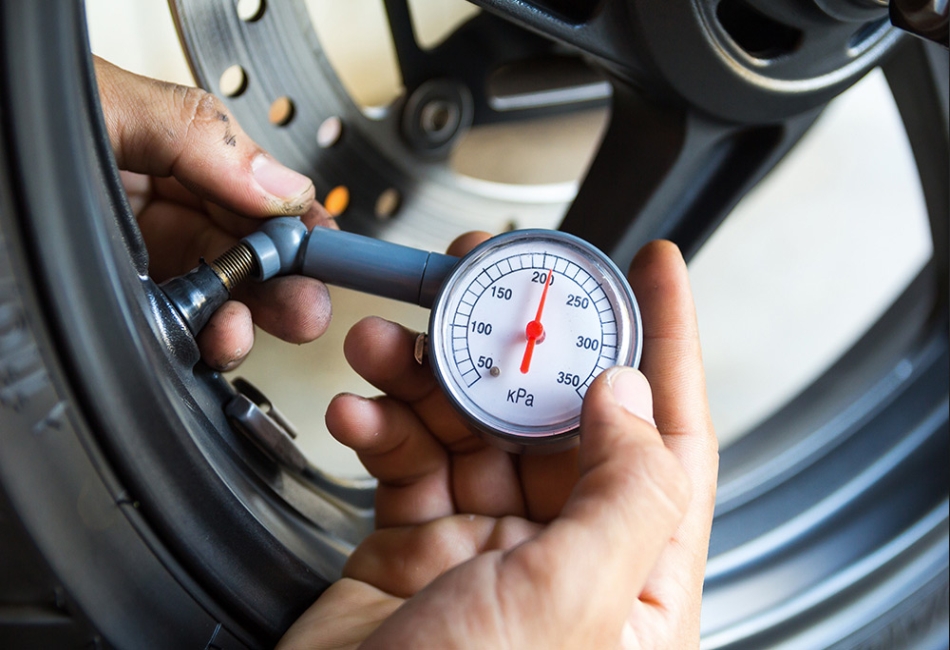Let’s be honest—checking tire pressure isn’t exactly the adrenaline-fueled part of riding a motorbike. It doesn’t have the sleek appeal of chrome, the thrill of acceleration, or the growl of a tuned engine. But if you’re ignoring your tire pressure, you might ride a time bomb on two wheels. You’ll ned the help of a motorcycle accidents attorney if it blows out. Whether you’re a weekend warrior or a daily commuter, tire pressure is one of the most crucial, yet most overlooked, aspects of motorbike maintenance. It affects everything from handling to safety—even your wallet. Buckle up (metaphorically), because we’re diving into why proper tire pressure is the unsung hero of every smooth, safe ride.
Grip It and Rip It—But Only If Your Pressure’s Right
Tires are your bike’s only connection to the road, entirely dependent on the contact patch—the part of the tire that touches the pavement. Too much pressure, and that patch shrinks, reducing grip and increasing the risk of sliding out, especially in wet or uneven conditions. Too little pressure, and the tire can deform, overheat, or wear unevenly, compromising traction just as badly.
In short, your tires need the right air to perform at their best. Think of Goldilocks—not too hard or soft, but just right. That “just right” number is specified by your bike’s manufacturer and printed in your manual (often on a sticker somewhere on your frame or swingarm). Ignoring it? You’re ghosting one of the most important parts of your bike.
Handling: Like Butter or Like Bricks
Ever wonder why your ride feels sluggish or twitchy? Blame the tires. Incorrect tire pressure can turn a nimble machine into a lumbering beast. Low pressure makes steering heavy and vague, while overinflated tires reduce your bike’s ability to absorb bumps, making it feel jittery or unstable. Either way, your cornering suffers, and that’s where most motorcycle mishaps occur.
Proper pressure ensures your bike leans, turns, and responds exactly how it was engineered. It’s the difference between slicing through a corner like a pro or awkwardly waddling your way around it.
Your Wallet Feels It Too
Running your tires with the wrong pressure doesn’t just wear them out faster—it can also damage the tire structure itself. Underinflated tires generate more heat, leading to accelerated tread wear and fuel consumption. Overinflated tires wear unevenly, particularly in the center, shortening their lifespan and forcing premature replacements.
Let’s break it down: tires aren’t cheap, and neither is gas. Skipping a simple tire pressure check could cost you hundreds, if not more, over the life of your bike. A five-minute pit stop once a week could be the most cost-effective habit you develop this riding season.
Safety Isn’t Optional
Here’s where it gets serious. Tire blowouts, loss of control, and poor braking performance are all risks of running on incorrect pressure. Motorcycles are inherently less forgiving than cars when things go wrong. There’s no spare tire, no four-wheel stability system, and no metal cage to absorb impact. Every little detail matters, and tire pressure is one of the big ones hiding in plain sight.
Even the best riders can’t out-skill bad tire pressure, whether commuting through city streets or taking tight bends on country roads, having the right PSI can make the split-second difference between a save and a slide.
Check It Like You Mean It
So, how often should you check your tire pressure? Ideally, once a week, and always before a long ride. Use a reliable digital gauge and measure when the tires are cold—riding even a mile can warm them up and skew the reading. It takes two minutes and could literally save your life. Also, inspect for embedded objects, uneven wear, and sidewall damage while down there. Consider it a pre-ride ritual—like a safety salute to the road ahead.
Conclusion
Your motorbike’s tire pressure isn’t just a number—it’s a lifeline. Getting it right from grip to fuel economy to safety is one of the simplest and smartest things any rider can do. It’s easy to overlook, but impossible to ignore once you understand the consequences. And if you ever find yourself in a situation where tire trouble leads to an accident, don’t go it alone—seek advice from a qualified motorcycle accidents attorney.. Legal guidance can make all the difference when dealing with insurance claims or liability issues. In the meantime, keep your tires properly inflated and ride safely. Your bike (and your body) will thank you.



